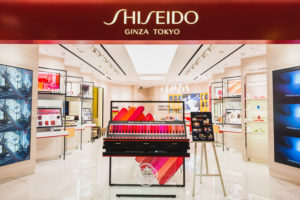Even though you may be familiar with key marketing strategies, have absolute confidence in your product and are satisfied that your game plan works well in Europe, Australia or the USA; when it comes to marketing in Japan you may be left confused and wondering why your tried and tested strategies don’t appear to work on the Japanese.
If you’ve never learned the Japanese language and the Japanese culture, you may feel like you’ve just entered confusing territory. By returning to Marketing 101 and examining the extended marketing mix for Japan, it will soon become apparent that the prospect of marketing to the Japanese is not as daunting as you may have once thought. In fact, the process may even open up your mind to new strategies. Furthermore, your view of the marketing concept could take on a completely new perspective.
The marketing mix or the five Ps – Product, Price, Place, Promotion and People – need to be broken down and set out in a way that would be conducive to good marketing practice in Japan.
Product
It’s paramount that your product is of the highest quality if it is to do well in Japan. If this isn’t the case it’s time to consider improving the mechanisms and materials used to create your product, especially if you wish to successfully position your brand in the minds of the Japanese people.
There are three huge consumer sectors in Japan always on the prowl for new and interesting products. These three target markets will be examined in order to further understand the importance of the quality control you need to have when you produce a popular product for this country.
Serving an Aging Society

Nearly 30% of the population in Japan is over 65. Almost 40% of consumer spending is driven by this age bracket. In terms of marketing, this seems like a goldmine, but there are important factors to take into consideration. The elderly are cautious spenders and they have a greater propensity to buy what they know and trust and that is more often than not made-in-Japan goods. Keeping that in mind, you can still tap into this market if you have a good quality product they can rely on. Support this with ads and commercials that scientifically prove your product works and why it’s better than local competitors and you’ll be on a winner.
Luxury Sells
There’s still a huge demand for luxury high-end products in Japan. The target market for extravagant goods is typically women aged 25 to 35 who work full time and love to indulge themselves. These girls shop in Ginza and Aoyama. They have an increasingly large disposable income because they are leaving marriage until later and continuing to work well into their thirties. This is one of the fastest growing markets in Japan today. They are picky and discriminating when it comes to quality, but be aware they have become more astute when it comes to pricing in recent years. Thus the market for opulent and extravagant products is a gap which needs exploring with lots of room for new products. Hence, your product obviously needs to be made of the best materials. Another point to take into consideration is that you should never underestimate your buyers in this consumer bracket and think they can be duped into accepting something that appears luxurious, but is actually poorly made. The desire to show off trendy Western purchases is also strong. Make sure every item you sell is produced, marketed, and packaged in a way that emphasizes the fact it’s a stylish Western item.

If your product lacks the luxury feel but the quality of the item is still very good, there’s no need to despair. Right next to Aoyama, Harajuku is the shopping district favored by fashionable teenagers and young adults. These youthful and trendy consumers are always searching for a product similar to yours but there is one important factor – it needs to have the cuteness quality. Kawaii is the Japanese word for cute and anything and everything kawaii has been a major trend in Japan for over ten years. Even if you’re selling household goods or something as simple as an umbrella – have you ever thought of amending your design to give it the cute factor? Basically, adorable products equal huge profits.
Price
Now you’ve created the most luxurious product, cutest range of merchandise, or the best scientifically proven item to have ever hit Japan, you need to decide on price. Never presume only high-end products deserve a high-end price. What is considered cheap in the West can be very expensive in Japan.
Japanese men and women are extremely savvy when it comes to reading the market and knowing what’s on offer and how much an item should be priced. As gift giving in Japan is prolific in their everyday life, they have a strong awareness of the value of a gift they’ve just received. For example, a melon in Japan can cost as much as the equivalent to $80 or $100 in Ginza. Believe it or not there’s a big market for such expensive fruit. The receiver generally knows from the packaging on the produce that it was bought from a certain exclusive retailer, the quality is high, and it’s a special item that deserves the attached price tag. The giver is honoring the recipient with this present. Hence, sometimes it’s necessary to keep your price high if you want to be seriously considered for the luxury market in Japan. If the quality is exceptional, even on a piece of fruit, the more they’re prepared to pay.
The elderly are looking for one-off high priced gifts that will impress their friends and trustworthy items for themselves but if your product actually does what it says on the label and it meets their expectations, you can expect repeated sales and a lot of loyal customers who will pass on their praise to future generations.
In regards to the latest range of cute products you’ve just created for the Japanese market, it’s important to keep pricing a lot lower. Your target market is much younger, probably between the age of 12 and 25 and possibly studying, with an allowance to spend. You also need to keep creating alternative designs to keep this market interested and increase your profits through brand loyalty and multiple sales. For example, if your product is a mobile phone case, you could always maintain the same shape as well as the qualities that make your cases so popular, but keep adding new and very cute accessories that your buyers can attach to these cases. This will give them reason to keep coming back to buy the latest attachment and create multiple sales.
Place
If you’re planning to fly to Japan and wander around Tokyo to find the perfect place to promote your product, you’re going to end up disorientated and disheartened. Although most Japanese speak some English, you’ll find it very difficult asking for directions or for any other assistance, without strong Japanese skills.
One trick a lot of foreigners without fluent Japanese skills use, is to start your inquiry with Chotto Sumimasen . . . This means Excuse me . . . and if you say these two simple words and then speak English, most people will be happy to help you, even if their language skills are poor.
If you really want to break into the Japanese market and prove your professionalism, you should Google ‘publicists in Japan’ and consider hiring a bilingual Japanese publicist. They will know the perfect location for your product to receive the attention it needs and they’ll also introduce you to valuable contacts. These businessmen will create the desired excitement for your product. If this works out to be too expensive, it’s a good idea to ask any friends who have lived in Japan or anyone who has an interest in Japan for advice on where they think you should promote your product. Most countries have local and online social clubs where Japanese people meet with Westerners to practise their language skills and participating in these groups can broaden your professional interests. Use of high quality professional Japanese translation services will help your efforts as well.
Remember location and the correct placement are critical when you market to the Japanese. It would be pointless to promote a luxury handbag in a shopping centre favored by junior high school students.
Promotion
Japan is at the forefront of mobile phone technology. According to The Japan Times, Sharp has just released its first 5G smartphone model. The Japanese regularly access the internet and it would be a mistake to think the elderly are not a part of this. They’re extremely tech-savvy. These septuagenarians are constantly scouring the internet looking for specialized products that meet their needs.

Selling your products through e-commerce marketplaces like Amazon and Rakuten is a popular way to sell online. Internet marketing has become an essential investment for companies if they want to reach millions of potential customers. If you’re looking for other ways to introduce your product to the Japanese you could create a well-designed website and complement that with a web banner on the social networking sites like Line, Instagram, Twitter and Facebook. You should also build up followers on these platforms but this takes time, commitment and skill. YouTube videos and daily YouTube vlogs are also a very popular way for the self-employed and small companies to promote their unique products. Using simple English with a few common Japanese phrases and visual effects can be very effective.
Don’t be too aggressive in your marketing campaign. Build trust on social media by showing you’re an expert in your field rather than a pushy salesperson. It’s also imperative you keep-up-to-date on social media news. The Japanese government can be strict on privacy laws and security and some social media platforms are at risk of being shut down for breaching these laws.

Packaging in Japan has become a promotional art in itself and has always been and continues to be an important way of providing an attractive and useful complement to a product. An example of this would be the way food is sold in the basement of popular high-end department stores. If you wanted three separate pastries to take home with you from a prominent cake store, each pastry would have its own separate section in a good quality cardboard container and a cold pack would be placed alongside the pastries to keep them fresh. A napkin and a plastic fork would then be placed with these cakes into a high quality shopping bag that elegantly promotes its logo on the packaging. You should remember how much trouble the Japanese take to sell a few pastries when you consider every way possible to best promote your brand.
A traditional way of promoting products in Japan has been to put your logo on a pack of tissues and have a representative hand these out in front of busy train stations. This may continue to be a good way of getting the message out about your product now and in the future, but other offline promotions such as newspaper and magazine advertisements, exhibitions and speaking about your product at seminars are still a great way to reach your target market. You could also consider promotions and ads in some of the well-circulated English newspapers. They are popular with Japanese people who have a strong grasp of the English language and Westerners living in Japan. Opening a local branch or a pop-up shop in one of the major shopping districts is another option.
People
This is the newest of the five Ps and the most important part of the marketing mix when it comes to Japan, as it concentrates on relationship marketing. As soon as you enter into a meeting with Japanese business men and women, you’ll notice that an aggressive approach to marketing will not sit well with them. Japanese people rely less on what you say and more on what you do, how you do it, and whether you can provide trustworthy, harmonious and honest business relations. There’s no need to speak loudly and if you opt for the soft sell and an indirect approach, your strength of character combined with a high quality and attractive product will impress your business affiliates in Japan enormously.
About the Author

Renae Lucas-Hall is an Australian-born British novelist and writer. Renae has graduated from two universities: she completed an Advanced Diploma of Business Marketing at RMIT University and a Bachelor’s Degree in Japanese language and culture at Monash University in Melbourne, Australia. She has also published three books with Grosvenor House Publishing. Over the past 30 years, Renae has worked with several Japanese companies and her extensive experience in retail, publishing and marketing has given her an in-depth understanding of the fashion industry, social media, writing and current trends.





